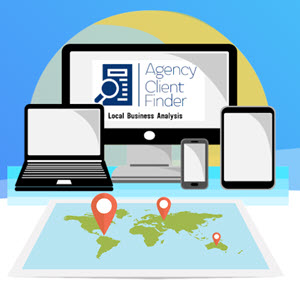Sale Force Structure
Sales force strategy influences the structure of the sales force. The sales force structure decision is simple if the company sells only one product line to one industry with customers in many locations. In that case the company would use a territorial sales force structure. If the company sells many products to many types of customer, it might need either a product sales force structure or a customer sales force structure;, or a combination of the two.
territorial sales force structure A sales force organization that ussigns each salesperson to an exclusive geographic territory in •which that salesperson carries die company's full line.
TERRITORIAL SALES FORCE STRUCTURE, in the territorial sales force structure, each salesperson is assigned to an exclusive territory in which to sell the company's full line of products or services. This sales force structure is the simplest sales organization and has many advantages. First, it clearly defines the salesperson's job, and because only one salesperson works the territory, he or she gets all the credit or the blame for territory sales. Second, the territorial structure increases the salesperson's desire to build local business ties that, in turn, improve the salesperson's selling effectiveness. Finally, because each salesperson travels within a small geographic area, travel expenses are relatively small.
product sales force structure A sales force organisation under whieh salespeople specialise in selling only a portion of the company's products or lines.
PRODUCT SALES KORCE STRUCTURE. Salespeople must know their products. The task is not easy il the company's products are numerous, unrelated and technically complex. To overcome this problem, many companies adopt a product sales force structure, in which the sales force sells along product lines, For example, Kodak uses different sales forces for its film products than for its industrial products. The film products sales force deals with simple products that are distributed intensively, whereas the industrial products sales force deals with complex products that require technical understanding.
The product structure can lead to problems, however, if a given customer buys many of the company's products. For example, a hospital supply company has several product divisions, each with a separate sales force. Several salespeople might end up calling on the same hospital on the same day. This means that they travel over the same routes and wait to see the same customer's purchasing agents. These extra costs must be weighed against the benefits of better product knowledge and attention to individual products.
customer sales force structure A stUes force organisation under wj/tic'/i salespeople specialize in selling only to certain customers or industries.
CUSTOMER SALES FORCK STRUCTURE. More and more companies are using a customer sales force structure, whereby they organize the sales force along customer or industry lines. Separate sales forces may be set up for different industries, for serving current customers versus finding new ones, and for large accounts versus regular accounts. For example, a company selling photocopiers could divide its customers into four main groups, each served by a different sales force. The top group consists of large national accounts with multiple and scattered locations, which would be handled by national account manager*. Next are large accounts that, although not national in scope, may have several locations within a region and are handled by senior account managers. Customers with lower annual sales potential could be served by account representatives and all other customers could be handled by marketing representatives.
Organizing its sales force around customers can help a company to become more customer focused. For example, giant ARB, the Swiss-based industrial equipment maker, changed from a product-based to a customer- based sales force. The new structure resulted in a stronger customer orientation and improved service to clients:
David Donaldson sold boilers for ABB ... After 30 years, Donaldson sure knew boilers, but he didn't know much about the broad range of other products offered by .MSB's IIS Power Plant division. Customers were frustrated because as many as a dozen ABB salespeople called on them at different times to peddle their products. Sometimes representatives even passed each other in customers' lobbies without realizing that they were working for the same company. ABB's bosses decided that this was a poor way to run a sales force. So, David Donaldson and 27 other power plant salespeople began new jobs. [Donaldson] now also sells turbines, generators, and three other product lines. lie bandies six major accounts ... instead of a [mixed batch] of 35. His charge: Know the customer intimately and sell him the products that help him operate productively. Says Donaldson: 'My job is to make it easy for my customer to do business with us ... I show him where to go in ABB whenever he has a problem.' The president of ABB's power plant businesses [adds]: 'If you want to be a customer-driven company, you have to design the sales organization around individual buyers rather than around your products."
COMPLEX SALES FOUOE STRUCTURES. When a company sells a wide variety of products to many types of customer over a broad geographical area, it often combines several types of sales force structure. Salespeople can be specialized by territory and product, by territory and market, by product and market, or by territory, product and market. A salesperson might then report to one or more line and staff managers. No single structure is best for all companies and situations. Each organization should select a structure that best serves the needs of its customers and fits its overall marketing strategy.
Continue reading here: Other Sales Force Strategy and Structure Issues
Was this article helpful?
Readers' Questions
-
Kenneth Matthew12 months ago
- Reply
-
Matthew12 months ago
- Reply
-
stanley1 year ago
- Reply
-
fiyori1 year ago
- Reply
-
awet yohannes1 year ago
- Reply
-
Jenna Toivonen1 year ago
- Reply
